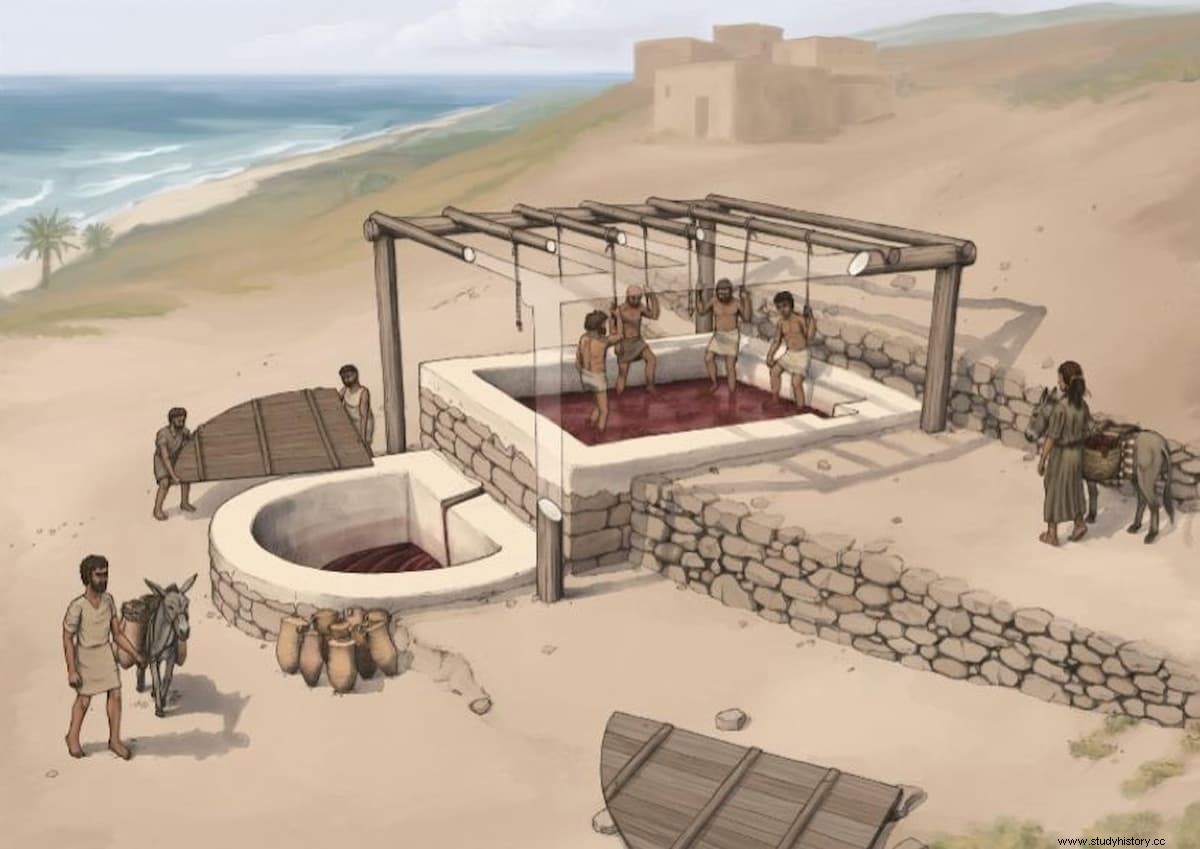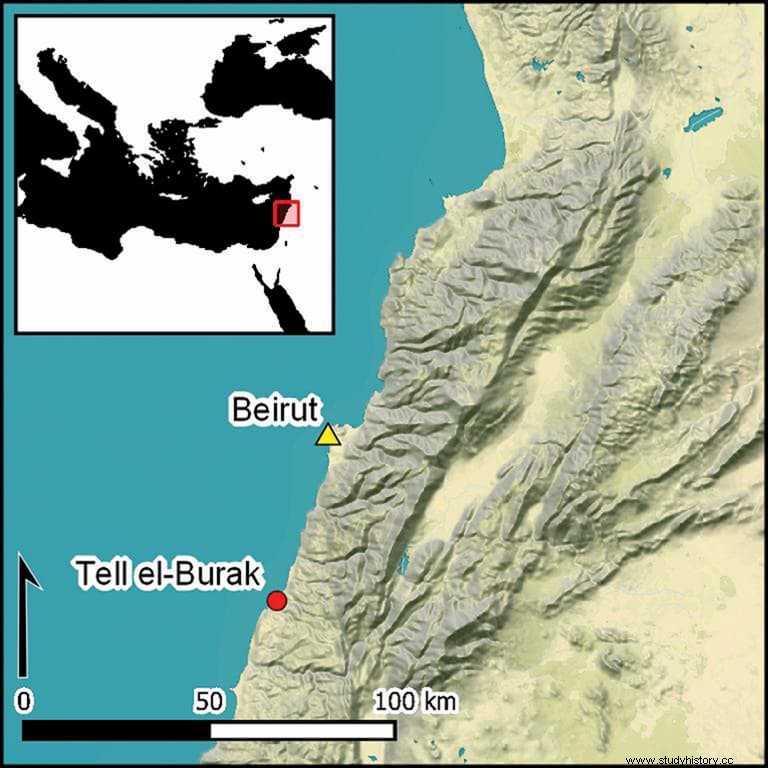Wine was of great importance in the Mediterranean Iron Age. In particular, the Phoenicians were considered to have played an important role in the spread and popularity of wine. Until now, however, no winemaking facility was known in the territory of ancient Phoenicia.

Now, the first Iron Age wine press in present-day Lebanon has been discovered during excavations at the Phoenician site of Tell el-Burak. Dr. Adriano Orsingher and Professor Jens Kamlah from the Institute for Biblical Archaeology, and Dr. Silvia Amicone and Dr. Christoph Berthold from the Center of Competence for Archaeometry Baden-Württemberg (CCA-BW) at the University of Tübingen, together with Professor Hélène Sader of the American University of Beirut, they investigated the construction of the wine press, which dates back to the 7th century BC. and the construction materials used in it.
They discovered that when the Phoenicians built the wine press, they used a plaster mixed with lime and crushed pottery shards. Later, in Roman times, this technique for making a lime-based plaster was further developed. The study has been published in the latest issue of the journal Antiquity.

Since 2001, the Tell el-Burak site has been excavated by a joint Lebanese and German mission. The Tell el-Burak Archaeological Project has discovered the remains of a small Phoenician settlement, inhabited from the end of the 8th century to the middle of the 4th century BC.
It is likely that the settlement was founded by the nearby city of Sidon to supply it with agricultural products. Tell el-Burak was bordered on the southwest and southeast by a terrace wall 2.5 meters wide. To the south of one of these walls we discover a well-preserved wine press. It had been built on the side of the hill , the authors report.

Analyzes carried out at the Tübingen CCA-BW have provided new data on the composition and technology of the Iron Age gypsum from which the wine press was made. A good quality lime plaster could be difficult to produce , the authors say, the Phoenicians refined the process using recycled pottery shards. This made it possible to build better and at the same time more stable buildings.
A local and innovative tradition of lime plastering had developed in southern Phoenicia , they add, the finished plaster was waterproof and durable. The Romans adopted this technique to make their buildings. An ongoing organic residue analysis at the University of Tübingen may determine whether Tell el-Burak's three plastered structures were connected to wine production.

Early research at Tell el-Burak showed that grapes were grown on a large scale around the town. We assume that wine was produced there on a large scale for several centuries. For the Phoenicians it was very important, they also used wine in religious ceremonies , say the authors.
The earlier discovery of a large number of amphorae, often used to transport liquids and other foods, indicates that the Phoenicians also traded their wine. The city of Sidon was on the maritime trade routes of the eastern Mediterranean. The Phoenicians played an important role in the spread of wine in the Mediterranean area, and their tradition of wine consumption was transmitted to Europe and North Africa .
Until now there has been little evidence of wine production in Phoenicia , according to the authors. This new discovery provides many clues as to how wine pioneers produced the drink .
